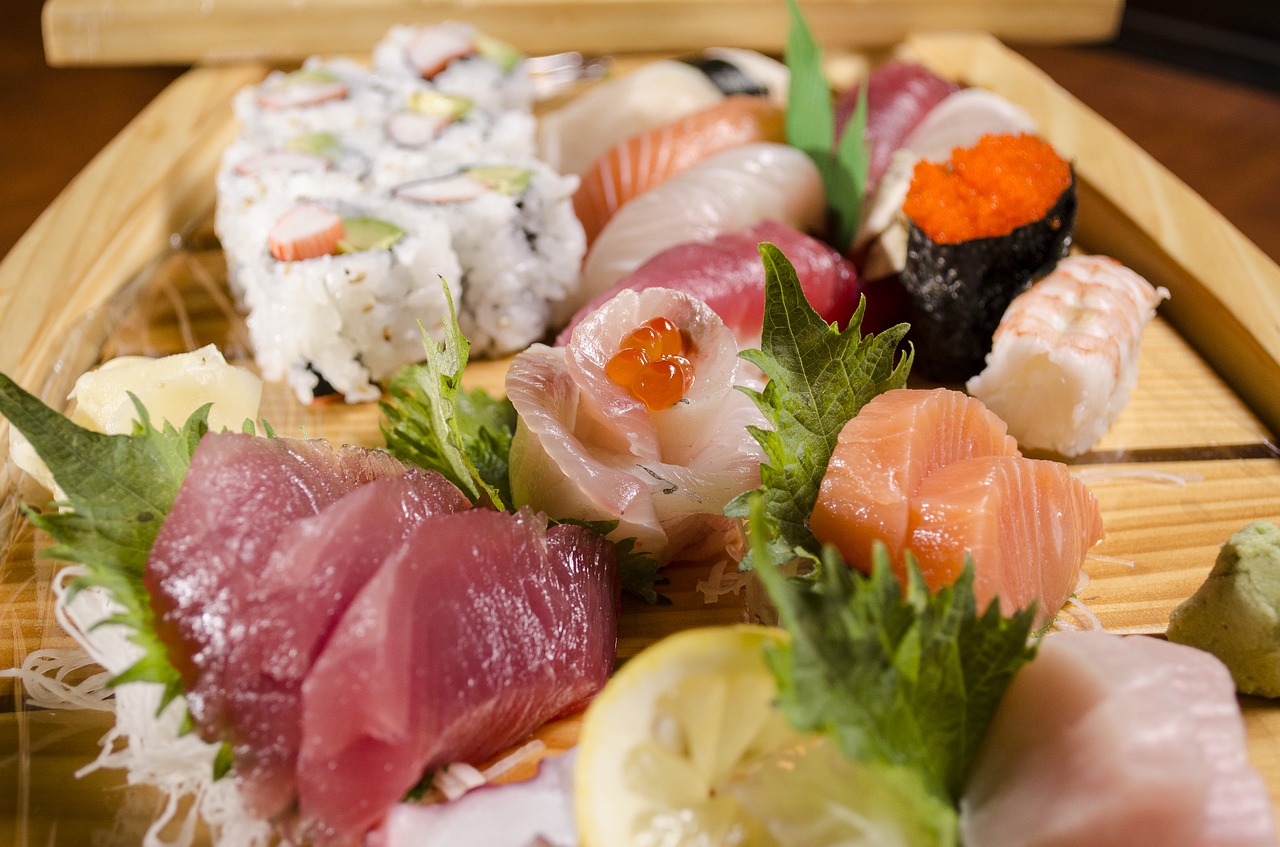
Sushi is worldwide loved for the delicate and subtle flavors it carries throughout the entire process of delighting the tastebuds. The soft, chewy hand-formed Japanese rice seasoned with vinegar, sugar, and salt also makes it one of the top most-devoured Japanese delicacies. However, enjoying sushi can be done in so many ways and we will be gladly discussing them today.
Mechanics
- The waitress will bring you an oshibori(hot towel) as soon as you seat down. Wipe your hands with it before touching the food; some restaurants leave the towel throughout the meal for you to wipe your hands; others take it away before your sashimi arrives. Either way you’ll get a napkin for your lap.
- Your wooden chopsticks will come joined at one end; separate them and feel them lengthwise. Rub them together only if you feel splinters. Never rub high quality, smooth chopsticks; you will insult the restaurant if you do.
- You may eat sushi with your hands or with chopsticks, whatever is more comfortable
Use chopsticks to grab morsels from a shared plate, holding the end that you put in your mouth with your fingers so that only the opposite end touches the food. You may use your fingers after depositing the sushi piece on your plate; turn your chopsticks around to grab it if you’re using them. - Some sushi bars have a small canal with thin springs of running water between you and the itamae; use these to rinse your fingers.
- Never ask for a spoon to eat your soup; simply grab the bowl with one hand and dig the bits of tofu, seaweed, or mushrooms with your chopsticks as you bring it to your lips. It’s perfectly polite to slurp, specially if the soup is hot. Ignore the gaijin (non-Japanese guys) glaring at you from the other side of the bar; chances are they haven’t read this HOWTO nor been to Japan.
- If the spiciness in your sushi is not enough, lace some with soy sauce for dipping your sushi; this is done by dabbing a tiny bit of wasabi (the bright green dough on your plate) onto a small saucer provided to you next to your bigger plate. Add some soy sauce for dipping. Blend it with your chopsticks. The right ratio of wasabi to soy sauce is up to you. Wasabi is very strong, stronger than hot mustard, so be careful with the amounts. The Japanese way is to use soy sauce without adding wasabi to it and dabbing the wasabi onto the sushi morsel itself. Your call.
- Never dip the sushi rice in soy sauce; turn your piece so that only the fish or whatever you have on it touches the sauce.
- Never dip in soy sauce something that already has a sauce or decoration on it, like unagi (fresh water eel served with some Teriyaki sauce and sprinkled with sesame seeds). If it looks elaborate or like it has some sauce on it, ask the itamae whether you should dip it.
- Always dip your sashimi or nigiri if they don’t appear to have anything on them.
- Your plate will have some gari, or pickled ginger, on it. Eat a little bit of it in between sushi pieces to clean your palate. Eating gobs of it is bad form.
- Ask for some oshinko (various pickled roots like radish) if you don’t like pickled ginger.
Meal Order
- Sashimi first
- Cooked stuff like unagi (grilled fresh water eel), tamago (omelette), and/or California rolls*
- Fresh fish and molluscs (nigiri or maki)
- Exotic stuff because it tends to have a stronger flavor
- Spicy anything like hand rolls (temaki) should be last
- Soup, edamame, and oshinko may be ordered and enjoyed at any time during the course of your meal
*Although this may sound harsh to Japanese food newcomers or beginners, they often say People who know how to eat sushi don’t order California rolls. They’re for wimps who can’t handle raw fish. Rule of thumb: if it has mayonnaise or tomatoes, or if it’s cooked and lacks an exotic name like ankimo, it’s probably not real sushi.
Why the Rice Tastes So Good
The white rice used for making sushi is cooked differently than the rice you eat with other Japanese food. Sushi rice is made with:
- Short-grained rice
- Water
- Rice vinegar (different kinds produce different colors)
- Sugar
- Salt
- Konbu, a form of kelp specifically used for sushi rice
- Some itamae add a bit of sake
Good sushi rice must have a delicate, sweet flavor that complements fish and clams without overpowering them.
